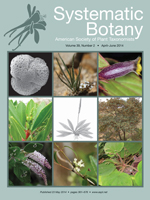The genera Lomatium and Cymopterus, along with many others, form a group that has been referred to previously as the perennial endemic Apiaceae subfamily Apioideae of western North America. This group of ecologically important and widespread species has been the target of numerous systematic studies, but the evolutionary relationships among these species remain elusive. Here we show that this confusion is due to high levels of morphological parallelism and homoplasy in the characters that have traditionally been used to define them, a result that is concordant with previous studies of the group. We explore patterns of evolution in traditionally important morphological characters using Bayesian stochastic character mapping on a phylogeny constructed from novel nrDNA and cpDNA sequence data for 96 specific and infraspecific taxa of the estimated 200 species in the group. We consider the implications of these results for taxonomic classification, the evolution of morphologies, and the utility of these morphologies to delimit small and large clades. Lomatium concinnum is newly combined as Cymopterus glomeratus var. concinnus and the new combination Cymopterus glomeratus var. greeleyorus is made.
How to translate text using browser tools
1 May 2014
Phylogenetic Analysis Reveals Multiple Cases of Morphological Parallelism and Taxonomic Polyphyly in Lomatium (Apiaceae)
Emma E. George,
Donald H. Mansfield,
James F. Smith,
Ronald L. Hartman,
Stephen R. Downie,
Cody E. Hinchliff
ACCESS THE FULL ARTICLE

Systematic Botany
Vol. 39 • No. 2
May 2014
Vol. 39 • No. 2
May 2014
classification
convergent evolution
Cymopterus
homoplasy
morphology




